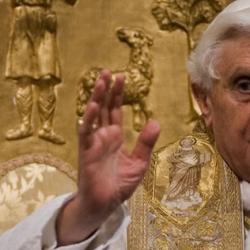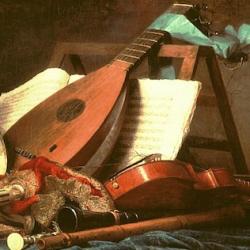Daniel Albright (Panaesthetics) emphasizes the learned codes by which we discern musical meanings: “Today most of the codes that cue us to feel come from quotation, either direct quotation of musical phrases or indirect quotation of certain gestures we have learned to associate with certain emotions.” Learned where? The same place we learn all our emotional cues – at the movies! (153). Albright refers to Enro Rapee’s Motion Picture Moods for Pianists and Organists (1924) to illustrate.
Still, he wants to give “mother nature” her due, and he does it with a neat comparison of music and gesture. Bodily gestures vary from culture to culture, but there is an inherent meaning in certain gestures that communicate X and cannot really communicate Y: “what are the meanings possible to the gesture of raised fist, trembling rapidly without a narrow compass, with elbow crooked and biceps contracted?” Lots of possibilities, but “some meanings are not reasonable, unless the sign system is constructive in an extremely willful manner. This gesture would not mean Be kind to kittens – except perhaps in the sense of Be kind to kittens, or else” (155).
The reason for the restriction in meaning is physical: The “gesture requires such great muscular tension, and is so often accompanied by the emotion of anger and the act of smiting, that it has a ‘natural’ range of meanings not easily trespassed. It is hard to imagine a human culture, or even a baboon culture, in which some sort of fury or self-insistence would not be intended” (155).
The analogy with “musical gestures” is quite direct: “The mere physiological tension involved in making very loud and rapid strokes with a bow or in hitting a very high note with a trumpet entails a certain urgency, and will tend to specify a certain range of meanings – arousal, agitation, assertion, and so forth. The opposite meanings tend to cluster around gestures produced with little effort” (155).
Then the payoff: “we read the meaning of the music from the imputed physical exertion of the musician,” and for this reason “to study music is to study the whole body. Music is not only a sign system of gesture; it is a simulacrum of the body on which gesture is inscribed.” He recognizes the connection is somewhat “distant,” but “musical compositions can present maps of the human nervous system.” Landscapes in music don’t provoke action, but elicit the nervous responses of the setting they depict. Vivaldi’s Winter leads us to “perform, with [the] whole body, a sequence of tremblings and chatterings, a lucid imagination of ice” (156). Music’s relation to the body can be even more direct, as in the prelude to Verdi’s Rigoletto, which makes us shudder because its code is built into the body, “sharp iambic rhythms are heartbeats” (156).
Far from being the most ethereal of arts, music is visceral, its meanings carnal.















